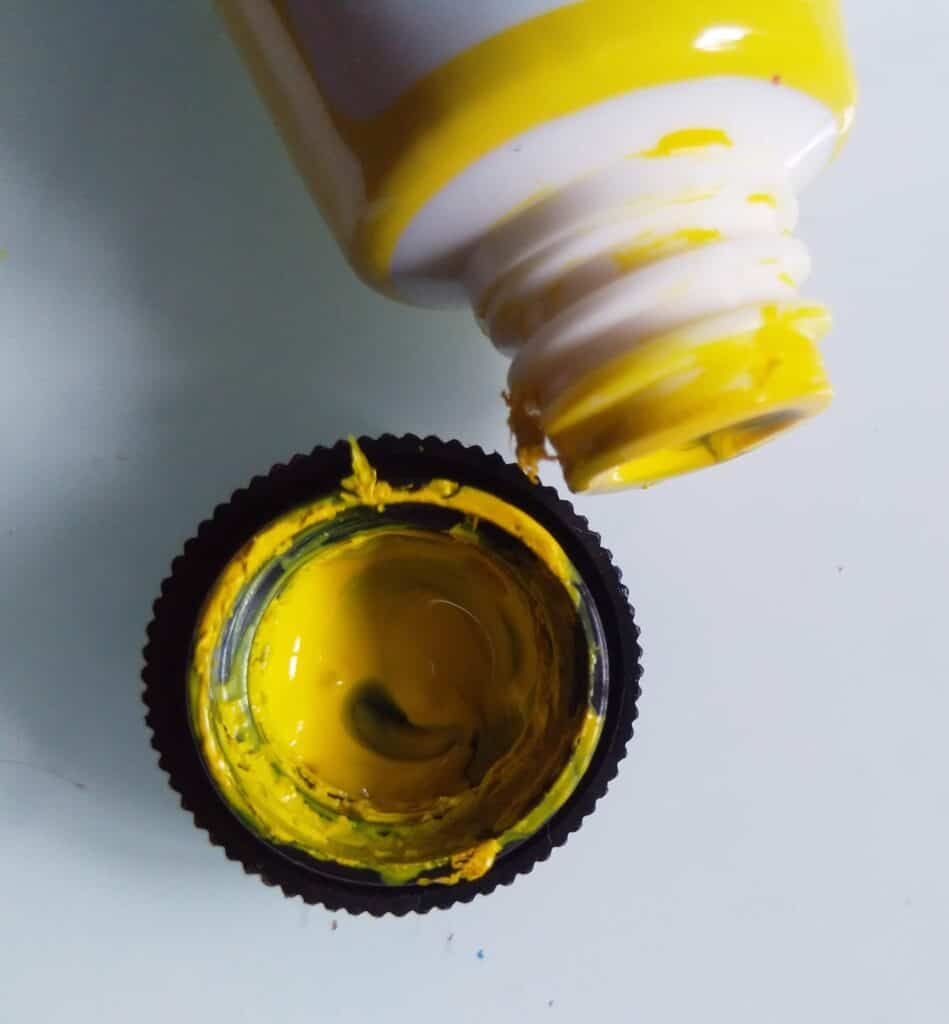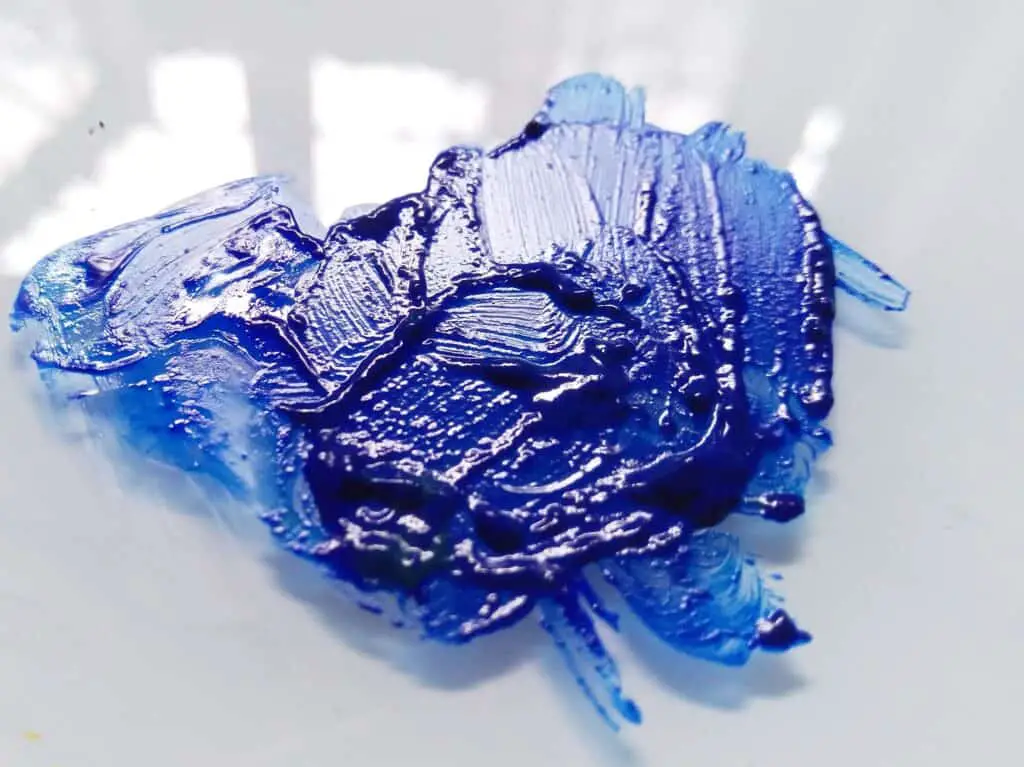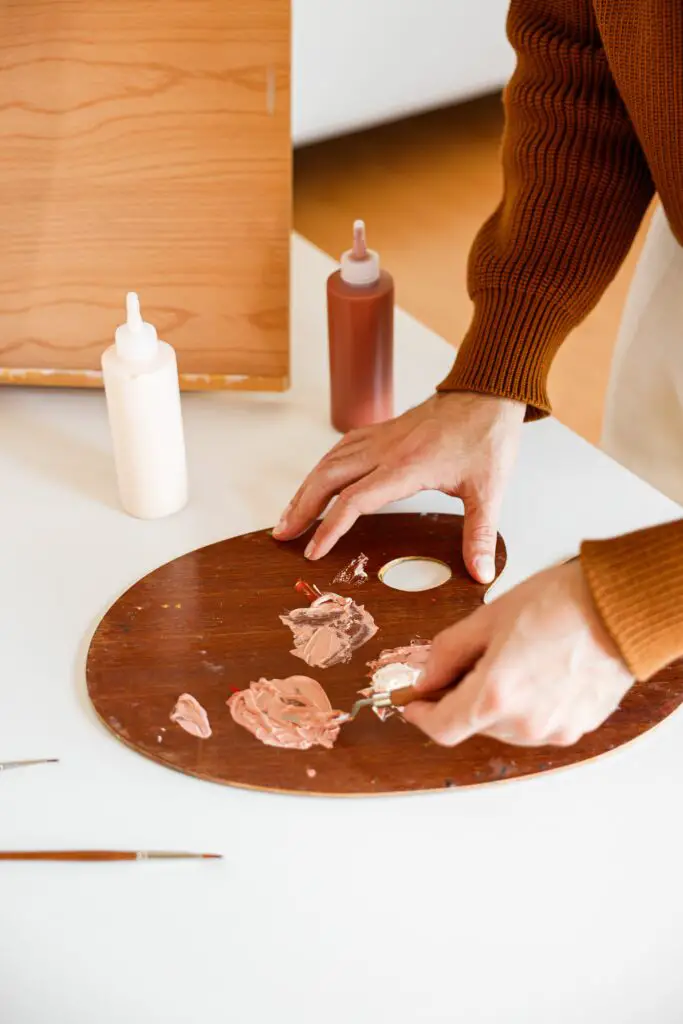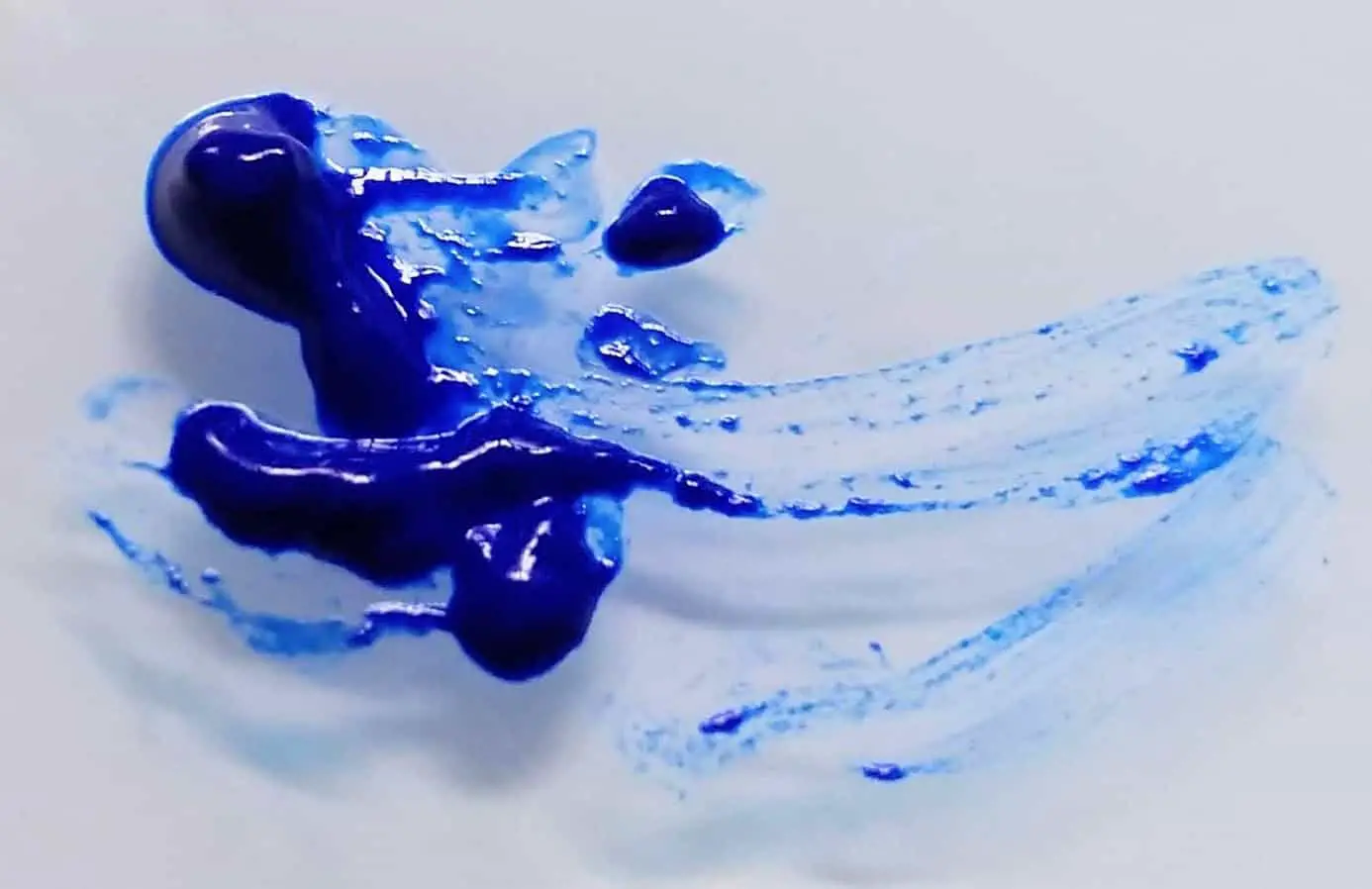Acrylic paints can have some defects like lumpiness and you might not have any idea why that happened. This is especially annoying in acrylic pour art as you can only see lumps after the paint is already on the canvas most of the time.
Lumpy or clumpy acrylic paint occurs when acrylic paint is drying due to air exposure, rapid temperature changes, microbial contamination, low-quality paints, or acrylic paint being old and expired. To fix this, store paint in proper environmental conditions, and mix or strain the acrylic paint
Lumpy paints usually happen in craft quality paints when they sit on the shelves without using for a long time. However, lumpiness can happen with artist-grade or high-quality acrylic paints also. Let’s discuss in detail why lumpy acrylic paints happen and the best fixes for them.
Why acrylic paint is lumpy or clumpy?
There can be many reasons why your acrylic paint is lumpy or clumpy. Let’s discuss each of the cases below in detail so that you know what to do in each case.
Acrylic paint is continuously exposed to air
Acrylic paint can develop lumps inside when the paint is continuously exposed to air. In general acrylic, paint containers are made to keep the air out. But if you did not put the lid correctly on the container air can leak into the paint and can cause lumpiness.
As artists, we are so lazy to clean the openings or the caps of our acrylic paint tubes in every use, I would say. This can build up dried acrylic paint around the openings of the paint tube disturbing the air-tight seal of acrylic paint. Therefore always close the paint container lids properly and avoid any means of air exposure to paint inside the container.

Acrylic paint is old or expired
Old or expired acrylic paint can have lumps. However, in theory, acrylic paint does not expire because it is a plastic compound. Therefore most paint manufacturers do not indicate an expiration date on the paint tube.
However, many environmental factors can influence acrylic paint expiring such as too hot or cold environments. If you keep acrylic paints in good condition for a long time they would not expire and avoid lumps in acrylic paint. I have written a whole article about how long acrylic paint last. You can find some in-depth details there.
In general, you can recognize if acrylic paint has expired or gone bad by checking if it is chunky, rubbery, stringy consistency, separated, dried, moldy, or bad-smelling acrylic paints. If acrylic paint has completely dried, it cannot be recovered. In other cases, it can be fixed. I have written a whole article about ‘How can you tell if acrylic paint is bad? (common signs)‘. You can find an in-depth guide in that article.
Using low-quality, cheap acrylic paint
Low quality or craft quality acrylic paint is one of the main reasons for acrylic paint being lumpy. If you keep these low-quality acrylic paints in storage for a long time they can develop clumps. I have experienced this for myself. So check if you are using a craft acrylic paint like Deco Art, Americana, or Folk Art.
This happens because of the cheap manufacturing process of low-quality acrylic paints. To keep the cost down they may less refine the paint. The quality of ingredients used may not the best quality to keep the paint from being lumpy.
Other than being lumpy low quality acrylic paint can lessen your good impression with paint. It is less vibrant and less pigmented, and achieving those saturated colors in a painting is almost impossible with craft-quality acrylic paint. Therefore I recommend you to use a good quality student-grade acrylic paint like Liquitex Basics or just use the artist-grade acrylic paint which has the highest quality.
Acrylic paint contaminated with bacteria
Bacteria contamination of acrylic paint can make the paint, lumpy, stringy, or rubbery consistency. This usually happens in old paints when the preservatives got expired. However, it can happen in acrylic paint even if the paint is not old.

This is not a big issue as you can easily smooth out the stringy clumps using a palette knife. I do not recommend throwing away rubbery or stringy consistnacy paints if it is a good quality paint, as you can still use the paint with proper mixing. You can also mix the paint with acrylic medium to get a smoother consistency.
I have written a whole article on ‘Can You Use Expired Acrylic Paint? (Pros and Cons Included)‘. Using the information in the article you can make an informed decision on whether to use expired acrylic paint or not.
Paint being exposed to drastic temperature changes
Acrylic paint being in extreme hot or cold temperatures can change its consistency and make lumps. If you expose the paint to high temperatures above 90oF (32oC) continuously chunks can form inside the paint. This can happen when you are painting outside and left your paints in a hot environment.
Freezing temperatures below 50oF (10oC) can separate the paint solids from the acrylic polymer binder. This can cause chunks of paint solids in the container. If this happens you can mix the acrylic paint well to recover it.
Paint being in these highs and lows of temperature can deteriorate the paint and cause lumps. It is ideal to store acrylic paint between 70 to 90oF( 21oC to 32oC) even in different seasons like summer and winter.
Other than temperature humidity may also cause lumps in acrylic paint as it can slow down drying time. When the humidity is extremely high, it can slow the drying time. The ideal relative humidity to store acrylic paint is less than or equal to 75%.
I have written a whole article about why acrylic paint becomes thick and the best ways to fix it. You will learn about different consistencies of paint and adverse environmental factors that make acrylic paint thicker than usual.
How to fix lumpy or clumpy acrylic paints?
There are a few things you can follow to remove lumps in acrylic paint. In the meantime, you need to keep acrylic paint sealed in a container without air exposure, in temperature between 70 to 90oF( 21oC to 32oC) and with relative humidity less than or equal to 75%. Then you can follow the below steps to remove lumps from paint when it is wet and even after drying on painting.
Strain the lumps out from acrylic paint or the medium
Straining is one of the best methods to remove lumps in acrylic paint. But it can be a little messy. You can use a piece of pantyhose stretched over the opening of a cup to strain acrylic paint into the cup. This is usually done in acrylic pour art. After you prepared the paint mixture you can strain it to remove the lumps.
In acrylic pour art, Floetrol is used to improve the flow of paint. Often Floetrol contains lumps and you need to strain it before mixing it with paint. You can use the same pantyhose and cup setup to strain paint.
Mix the lumps well with a palette knife
Mixing can help in most cases to remove lumps. You can mix acrylic paint with a palette knife until it is smooth in consistency. This works when the paint is lumped because of microbial contamination, or when the paint is separated. You can mix in some water or acrylic medium when mixing to help maintain the integrity of acrylic paint.

Fix the lumps when the acrylic paint is still wet
You can remove lumps while acrylic paint is wet. It is the most common-sense way of doing it. But I thought of including it here. You can pick up the acrylic paint lumps using a palette knife when the paint is still wet. This works mostly for large lumps in acrylic paint. However, this won’t work if acrylic paint has a lot of smaller lumps in it.
Sand the dried, lumpy acrylic painting
When you are painting you may not realize that the paint has lumps. This can especially happen with acrylic pour art. It can even be harder to remove the lumps when the paint is wet if there are many smaller size lumps. In this case, you might have to let the paint dry.
You can remove the lumps in a dry painting by sanding the painting and flattening it out. Then you can repaint the sanded painting without lumps.
Return or exchange the paint if it is new
If you see lumps in acrylic paint that are newly purchased then you can consider replacing it. Ask the retailer for an exchange or return the paint. This can mostly happen with craft paint but also with very old good quality acrylic paints as well. Returning or exchanging will be possible with most retailers if there is any defect with the acrylic paint. This is an obvious choice for you to try but thought it would be worth mentioning it here.
The bottom line
Lumping can happen when the anti-clumping agents in acrylic paints do not work correctly or environmental factors influence acrylic paint lumping. However, some may not even care if there are lumps if the art piece is really good. If you don’t like the lumps you can either prevent forming them or remove them altogether.

